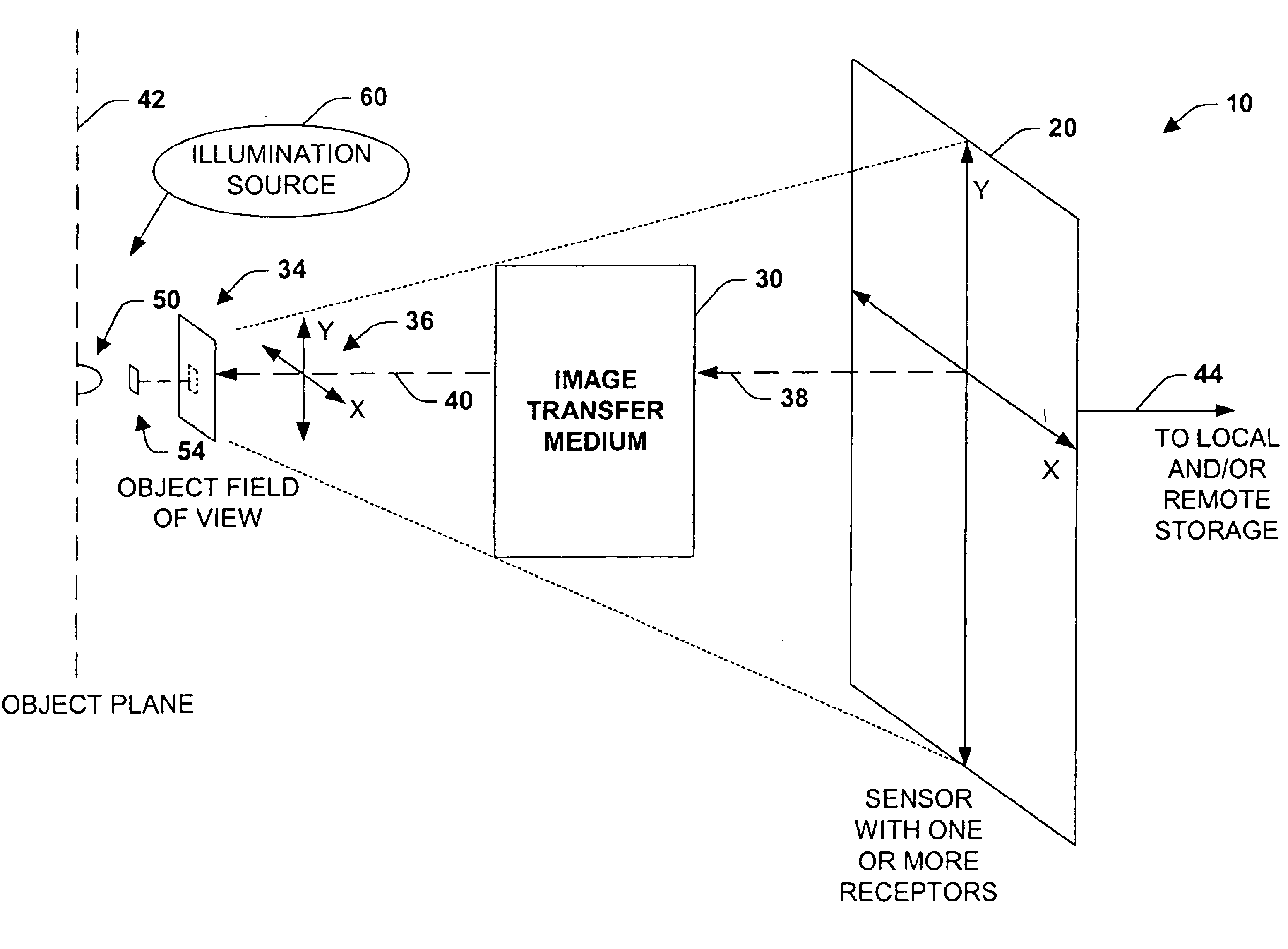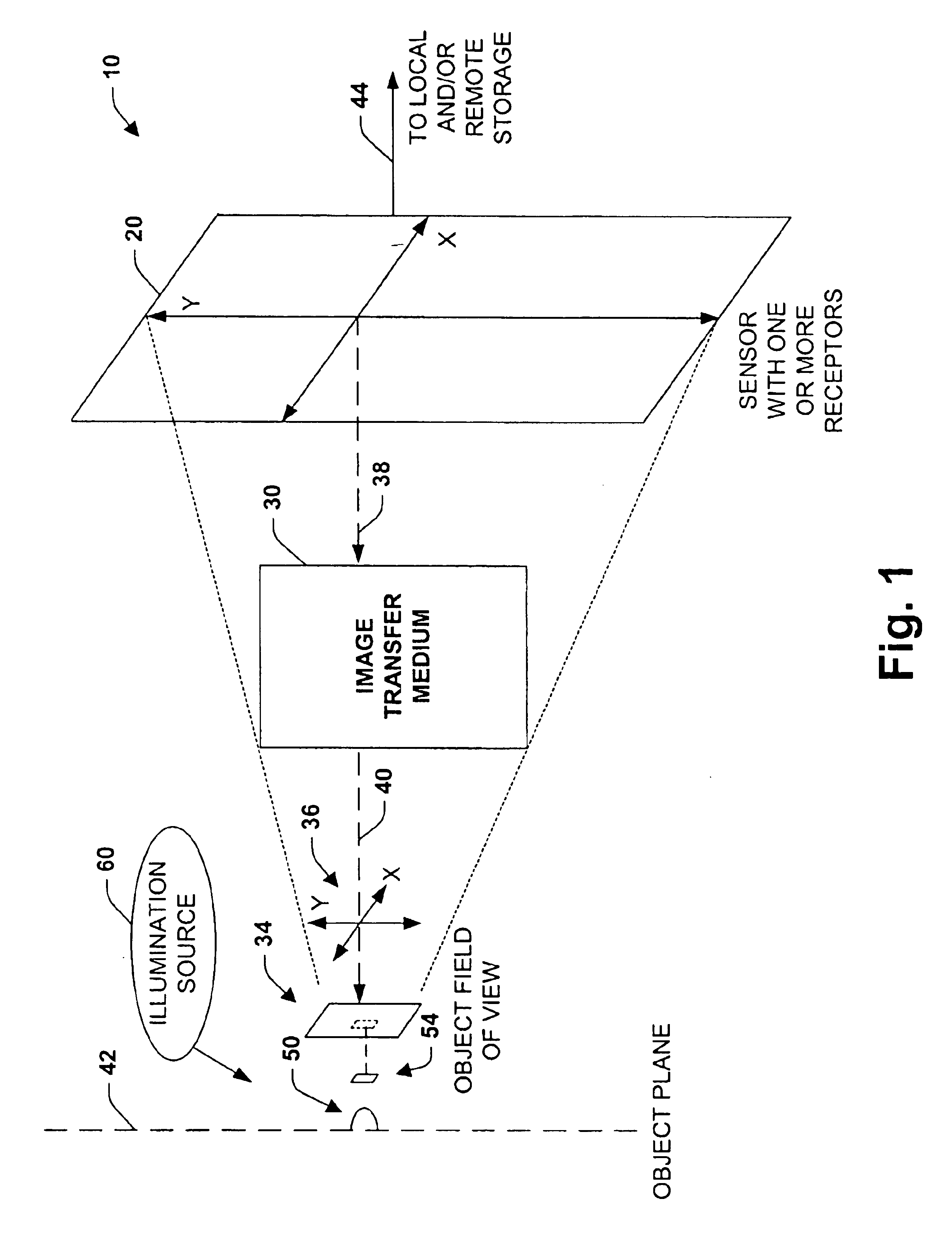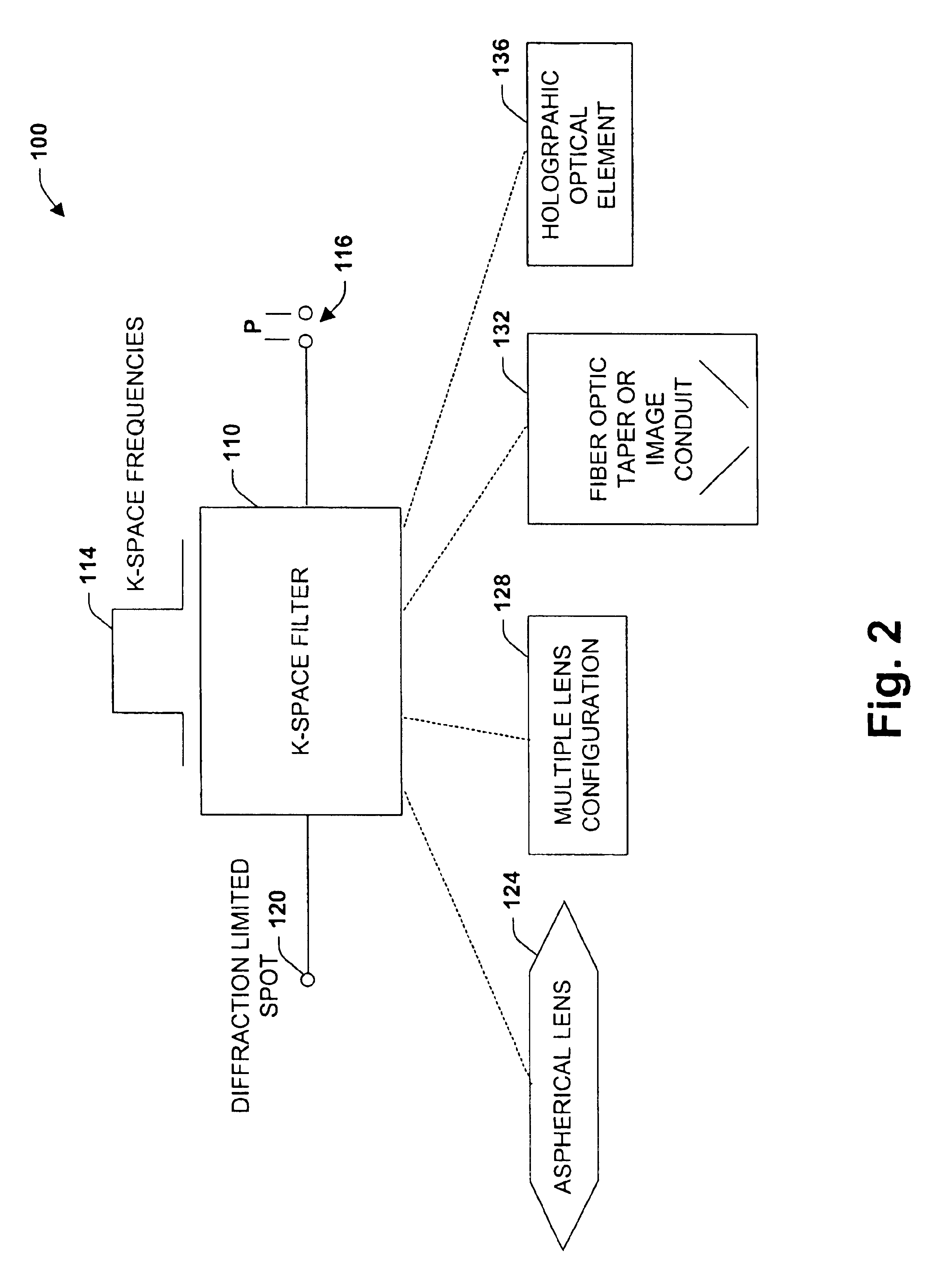Imaging system and methodology employing reciprocal space optical design
a technology of optical design and optical design, applied in the field of image and optical systems, to achieve the effect of facilitating the imaging performance of optical imaging systems, and reducing the number of optical components
- Summary
- Abstract
- Description
- Claims
- Application Information
AI Technical Summary
Benefits of technology
Problems solved by technology
Method used
Image
Examples
Embodiment Construction
[0032]The present invention relates to a system and methodology that greatly enhances a plurality of characteristics and / or parameters associated with microscopy and imaging in general. This enables technology for a plurality of applications utilizing a novel design approach which can include a general modular base-system to provide high effective magnification and high spatial resolution among other features. As an example, this can include vision-based microscopic imaging for a variety of applications while mitigating well-known disadvantages of conventional imaging designs and practices. Applications for the present invention can employ image and optical measurement of various samples, objects, materials, and / or matter and also provide for various microscopic imaging and measurement situations such as material, sample handling, inspection and analysis, for example.
[0033]According to one aspect of the present invention, a k-space filter is provided that can be configured from an i...
PUM
 Login to View More
Login to View More Abstract
Description
Claims
Application Information
 Login to View More
Login to View More - R&D
- Intellectual Property
- Life Sciences
- Materials
- Tech Scout
- Unparalleled Data Quality
- Higher Quality Content
- 60% Fewer Hallucinations
Browse by: Latest US Patents, China's latest patents, Technical Efficacy Thesaurus, Application Domain, Technology Topic, Popular Technical Reports.
© 2025 PatSnap. All rights reserved.Legal|Privacy policy|Modern Slavery Act Transparency Statement|Sitemap|About US| Contact US: help@patsnap.com



